Saint John's Pottery forges community
How Richard Bresnahan shares ancient art, intentional stewardship, open hospitality, and builds a community around the hearth.
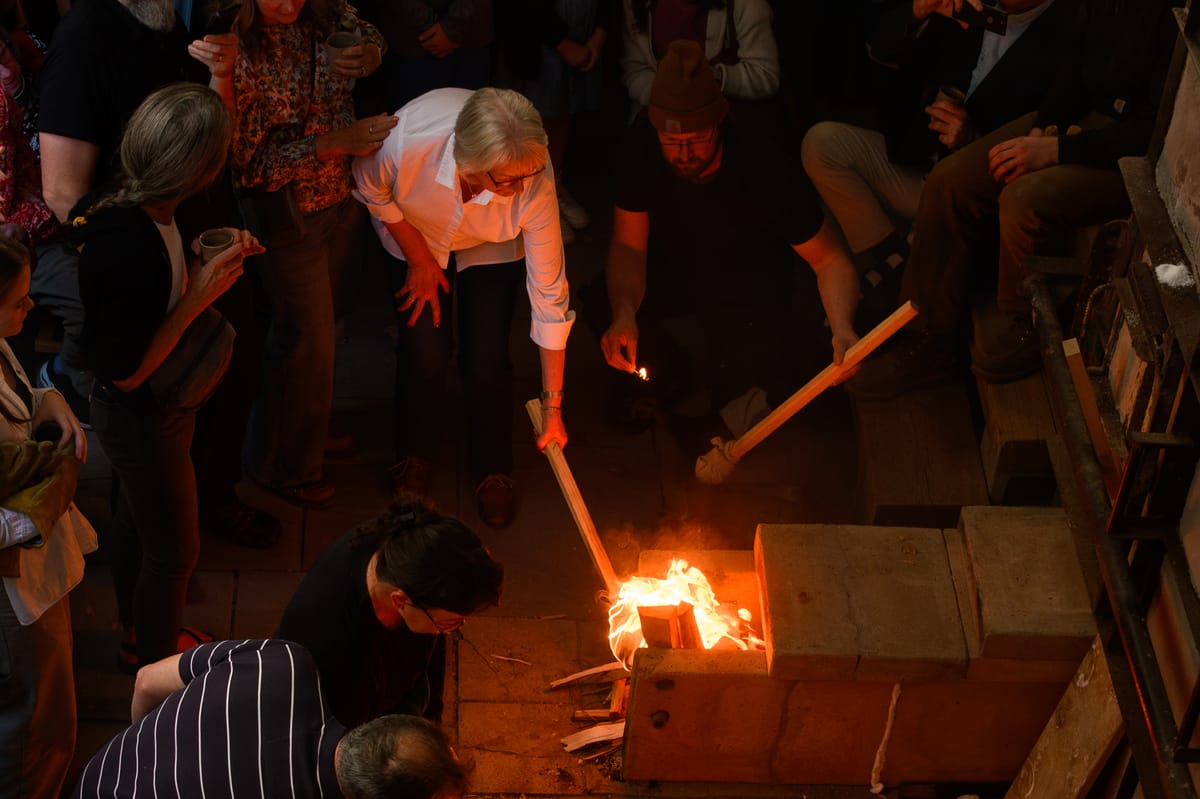
COLLEGEVILLE, Minn. – Through the door of a vine-twined brick pottery studio on the edge of Saint John’s University, students, staff, and visitors are welcomed to gather at the hearth for thoughtful conversations and connections.
As they admire the unique earth-toned pottery that lines the shelves, Richard Bresnahan, Master Potter and director of The Saint John’s Pottery studio, dips his hands in water and skillfully coaxes clay into a new vessel before he takes a break for tea, which anyone may join.
A wisp of incense curls upward, and a kettle heats up in the center of an irori, a traditional Japanese hearth that’s at the heart of The Saint John’s Pottery studio. An apprentice pours steaming water over loose tea leaves in one of the studio’s handmade pots, lets it steep, and gently pours it into handmade cups.
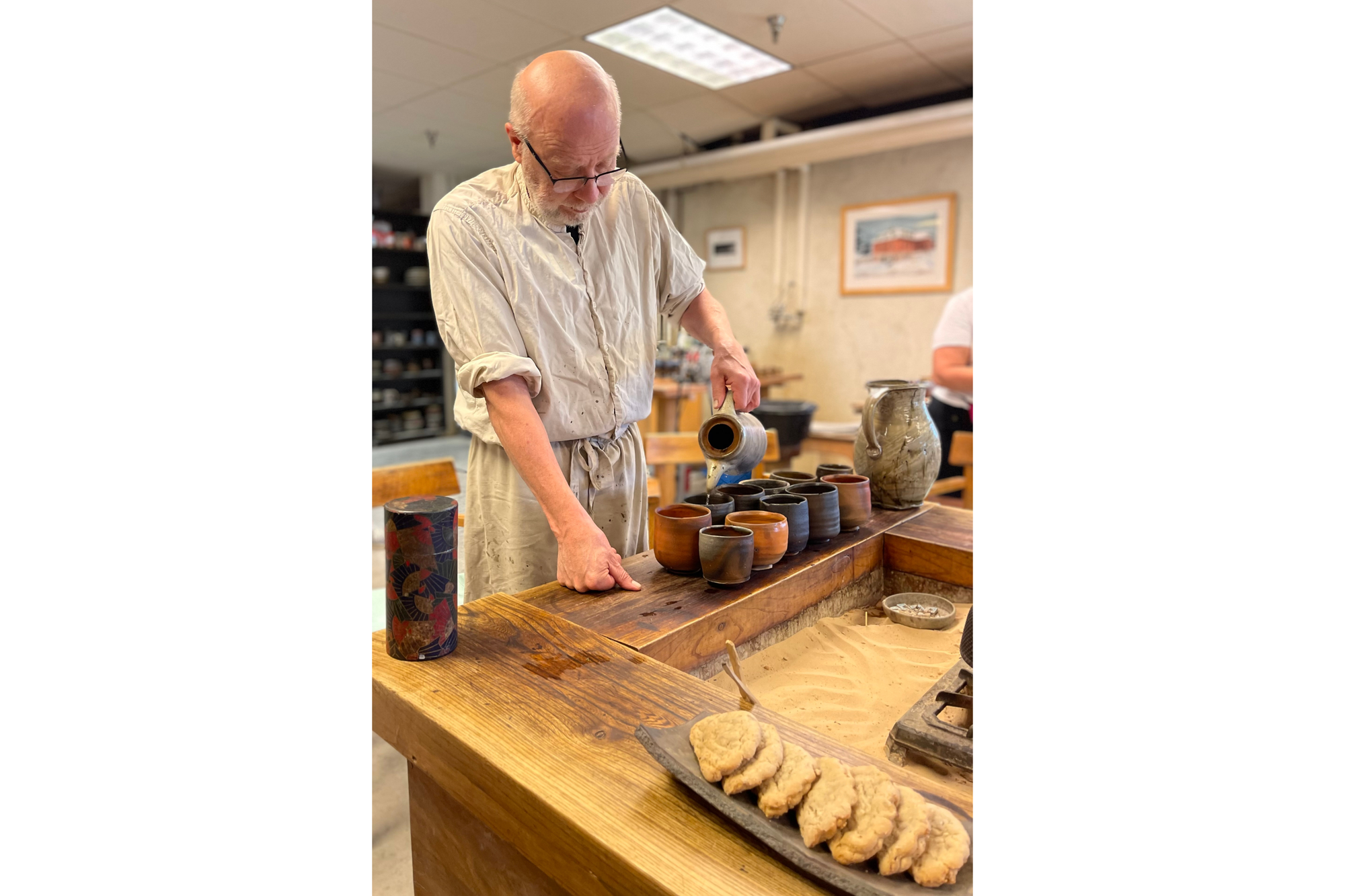
Here, the stories and life lessons shared over warm cups and the lifelong connections forged around that hearth are like mastering the skills of Saint John’s Pottery: it’s meant to spark thoughtful, intentional living, and to carry that wisdom into the generations ahead.
Bresnahan, Saint John’s University’s artist-in-residence since 1979, has mentored 53 four-year apprentices, along with countless other artists, sharing a well of knowledge that delves far deeper than mastering clay, glaze, and kilns.
Creating a life with eco-mutualism
Bresnahan, 71, was living sustainably long before the term became a buzzword.
“'Corporate sustainability' is an oxymoron,” he said. The economy, based on what can be extracted and monetized, “never puts the environment first.”
Bresnahan refers to his way of living as “eco-mutualism,” a symbiotic relationship where all species benefit from interactions, from nature to neighbors.
It reflects what he learned at Saint John’s Preparatory School and Saint John’s University, where Benedictine values include integration of art and life, offering hospitality, fostering a sense of community, living a life of stewardship, and recognizing the divine in ordinary events of the day.
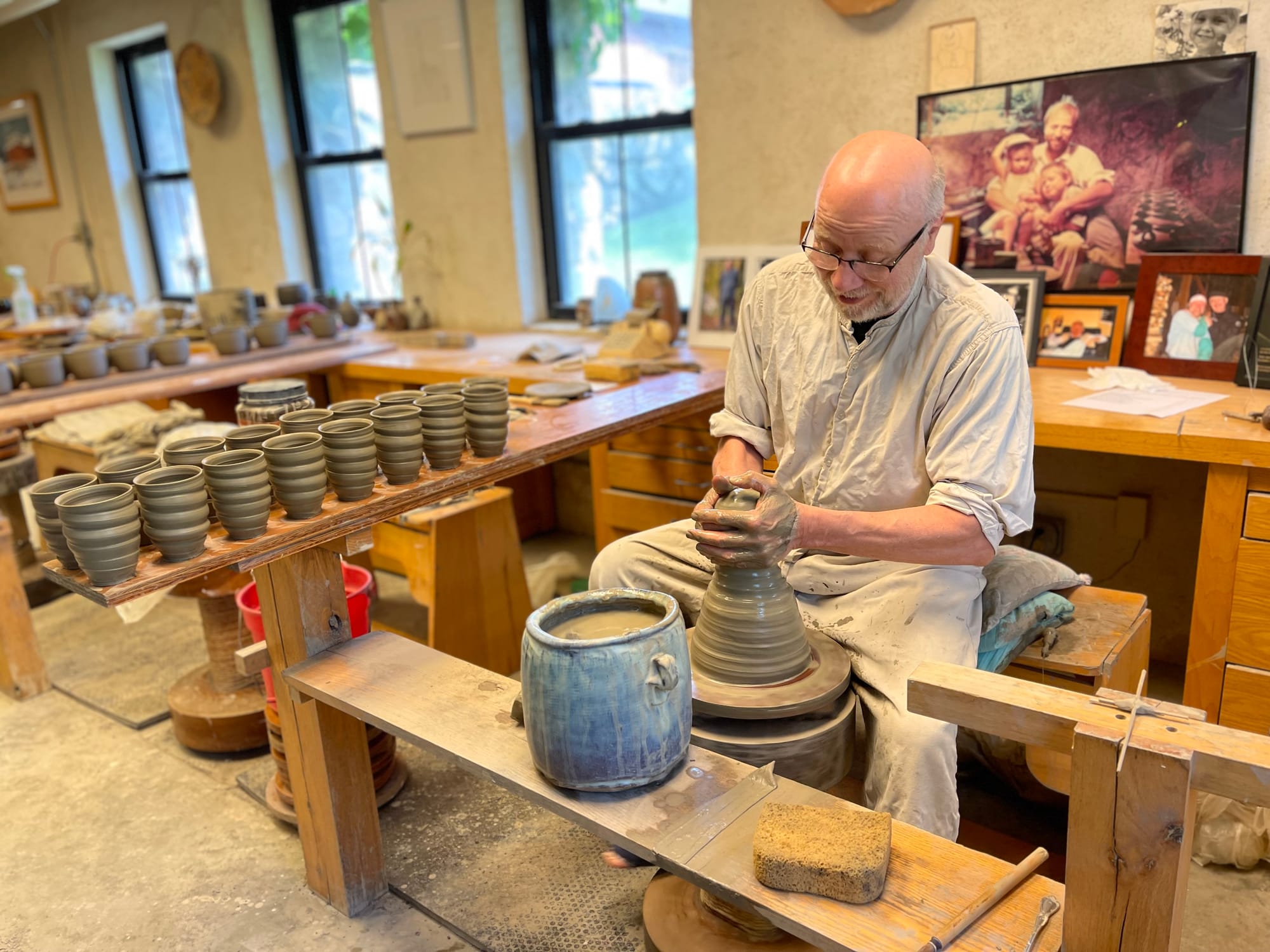
These values offered different perspectives at a time when he saw agricultural and other corporations shatter once-stable communities, like his small tight-knit hometown west of Fargo. They tore up shelter belts for more profits, used chemicals that polluted the water and land, destroyed wildlife, and caused infant deformities. They forced small businesses like his dad’s grain elevator to close.
“It was heart-breaking,” he said. This whole ecosystem collapsed.”
Learning an ancient art in Japan
Bresnahan tasted life far from the West’s industrialized and corporate culture thanks to his mentor and East Asian art historian Johanna Becker, who arranged an apprenticeship for him in Karatsu, Japan. Despite being a foreigner and knowing little of the language, he learned from Nakazato Takashi, a descendant of potters going back to the 13th century, and the son of a designated National Living Treasure of Japan.
Bresnahan worked hard and learned quickly as he helped build a studio and kiln. He practiced ancient methods of wood-firing local clay with handmade ash glazes into timeless pieces that could be used and appreciated every day.
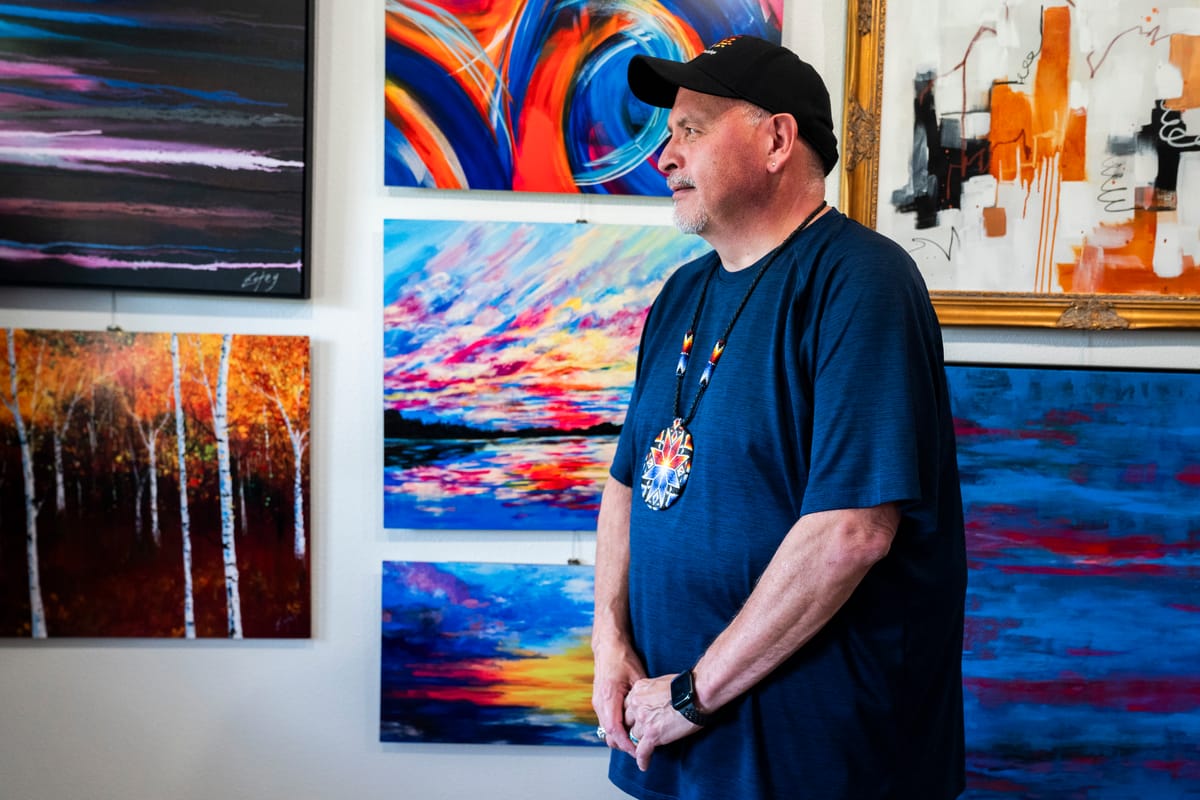
By contrast, Western art departments used gas-fired kilns and bright glazes made from mined materials including manganese, green chromium, yellow cadmium, and blue cobalt, which can be absorbed through the skin and are toxic. Bresnahan said he lost four fellow potters, which underscores his insistence on safe, local materials.
“[Karatsu, Japan] was a totally different world,” he said. “They lived in the land, not on the land.”
Carrying art and values forward
When Bresnahan returned to the United States and sought a place to establish a studio, Saint John's fit with his values and vision. He uses hyperlocal materials, and carries forward what he learned to other aspiring artists.
Saint John’s named him their first artist-in-residence in 1979, and Bresnahan taught classes that blended both art and his desire to protect the environment when he began his career at Saint John’s. He created a studio space and built kilns using recycled bricks, wood, and other materials.
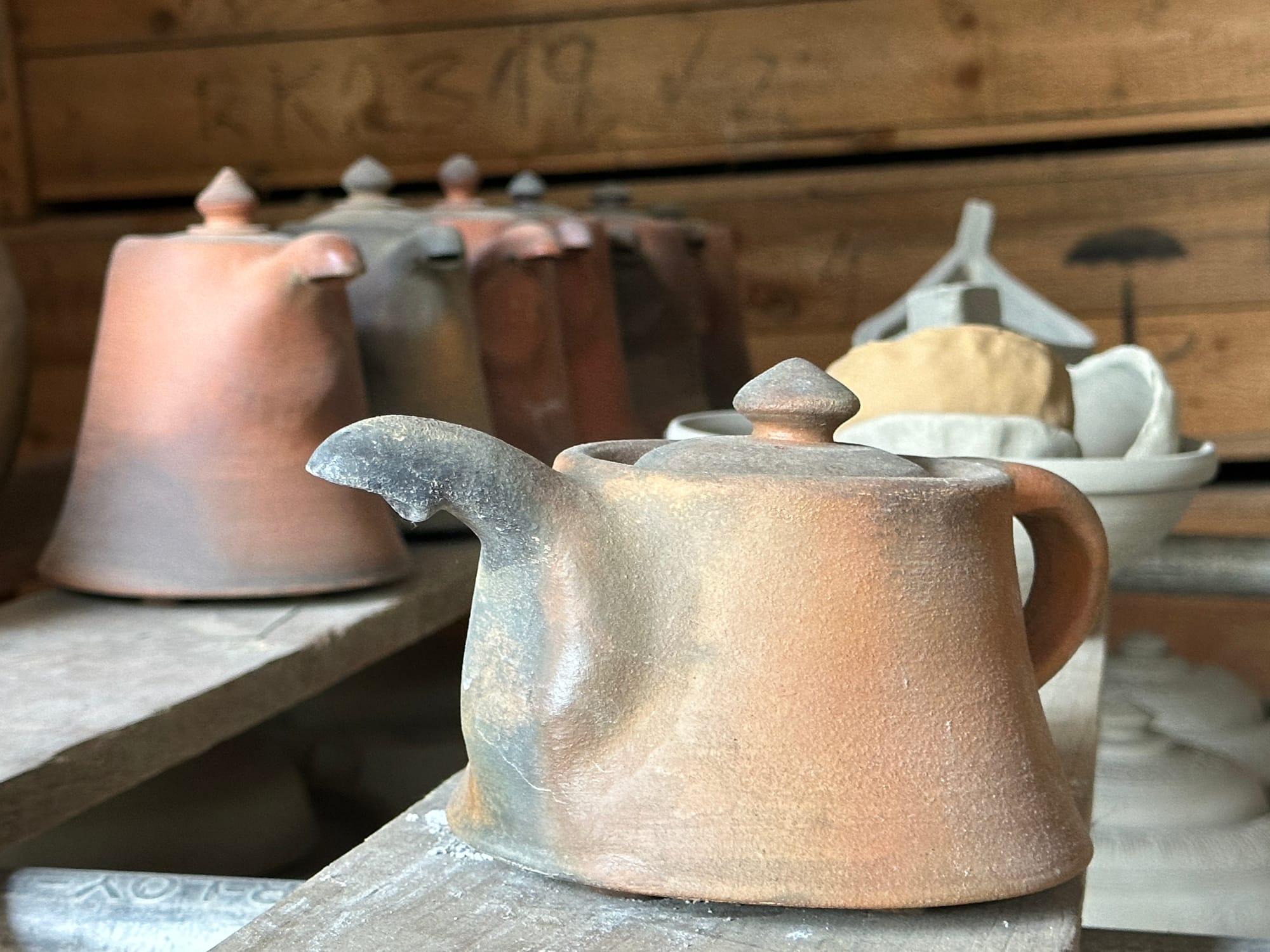
A road project near the university exposed a massive clay deposit, which a crew excavated and relocated to Saint John’s — it’s enough to last for 300 years. Bresnahan and apprentices process it themselves, mixing the clay with water, sifting out the impurities, preparing it for everything from centerpiece bowls and tea pots to liturgical vessels and expressive sculpture.
Bresnahan experimented with traditional Japanese glazes that use ash for subtle warm colors, flax straw for blue-tinged tones, discarded sunflower seeds for golden ones, and waste granite dust for dark browns.
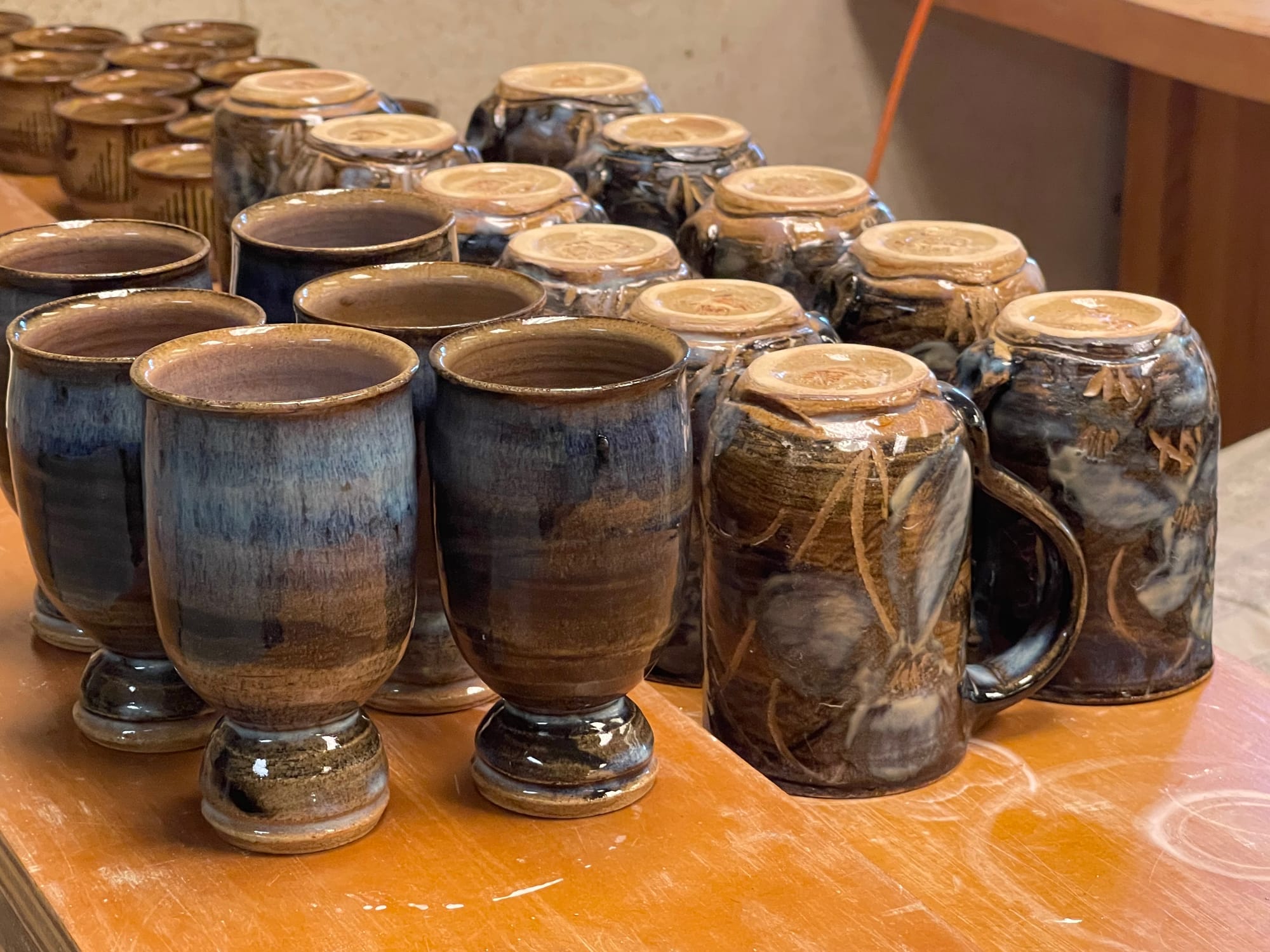
Apprentice Carter Slette, who pursued degrees in biology and environmental studies, is experimenting with ash from bluestem grass this year, which marks their first use of native plant species.
“We make glazes with pretty fantastic coloration based on the mineralogy of a specific plant we’re working with,” said Daniel Smith, studio manager and a former apprentice.
Using and sharing resourcefulness
Japanese potters will use rice hull ash in glazes. The Red Lake and White Earth nations gifted Bresnahan with wild rice hulls for the studio. Not a true rice and technically a grass species, the hulls are high in silica and durable enough that they won’t compost.
Hulls can safely hold a wild rice seed on the bottom of a lake for a year or several, depending on weather, which allows the seed to germinate only when conditions are favorable, Bresnahan said.

The hulls also can be used to separate unfired pots in the kilns and prevent them from fusing. They can be mixed with clay or cement, water and sand to build a sturdy wall. He’s shared his wild rice hull stucco-like recipes with tribal members interested in building with renewable, affordable materials.
If someone loses a tree or has old windows or reusable supplies from a remodel or teardown, Bresnahan looks for ways to pass on the wood and materials so another artist can more affordably build their home or studio, much as he and his wife, Collette, have done in the woods of Collegeville.

He’s frustrated to see younger generations unable to afford housing and sometimes waiting tables, unable to make a living with art degrees. Many universities also are shuttering their art programs, he said. Those are the kinds of issues that can come up over afternoon tea in the studio as people ponder solutions and ways to help.
Apprentices who work with Bresnahan know they’ll get lessons not only in art, but also about how to craft a life they can sustain. They will also connect to a vast network of potters and supportive members of the local community who often come together, from across the country or across the ocean, every two years when it’s time to fire up North America’s largest wood-burning kiln.
Getting ready to fire the kiln
Bresnahan, Smith, and two apprentices work to load the Johanna Kiln for six days a week from August until the firing in October. The kiln was built in 1994 and named for the mentor who changed Bresnahan’s life.
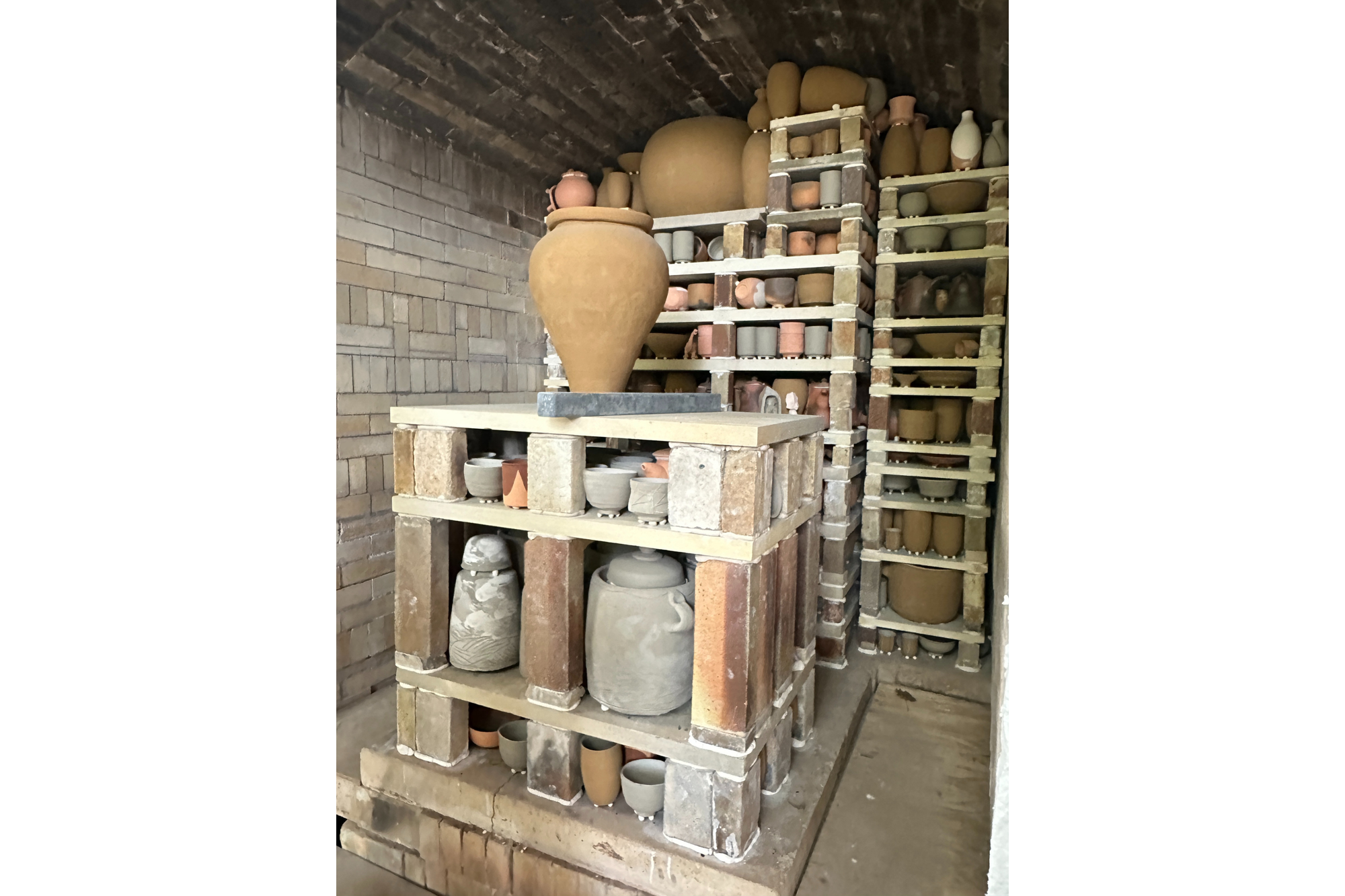
Stretching 87 feet with three tiers of chambers, the kiln can handle 10,000 to 12,000 pottery pieces if they employ Jenga-champion spatial skills and a Master Potter’s decades of hands-on experience.
“The hardest thing to do is loading the kiln,” said Bresnahan. Where the pottery is placed affects the alchemy as 2,500-degree heat transforms trace minerals into the pottery’s distinct beauty.
Many people haven’t missed any of the kiln’s 17 firings, which have become a cherished celebration.
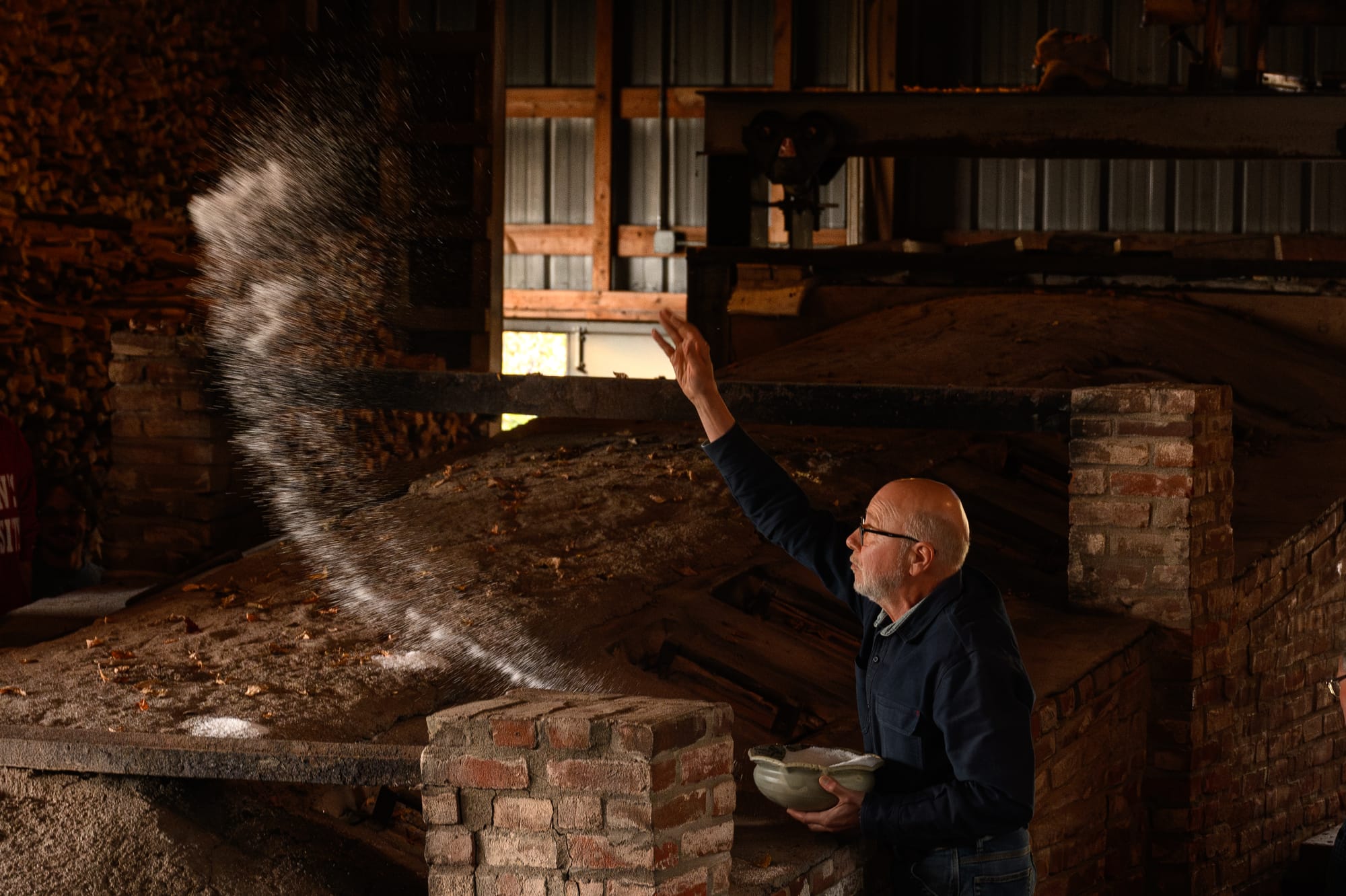
There’s a magnetism to lighting the kiln, Smith said.
Alison Breen attended the 2022 firing and said the event convinced her to apply for her apprenticeship.
“The most exciting part was the community,” she said of watching that firing. The four-year apprenticeship ensures each participant can have hands-on experience with at least two firings, a pivotal part of the process.
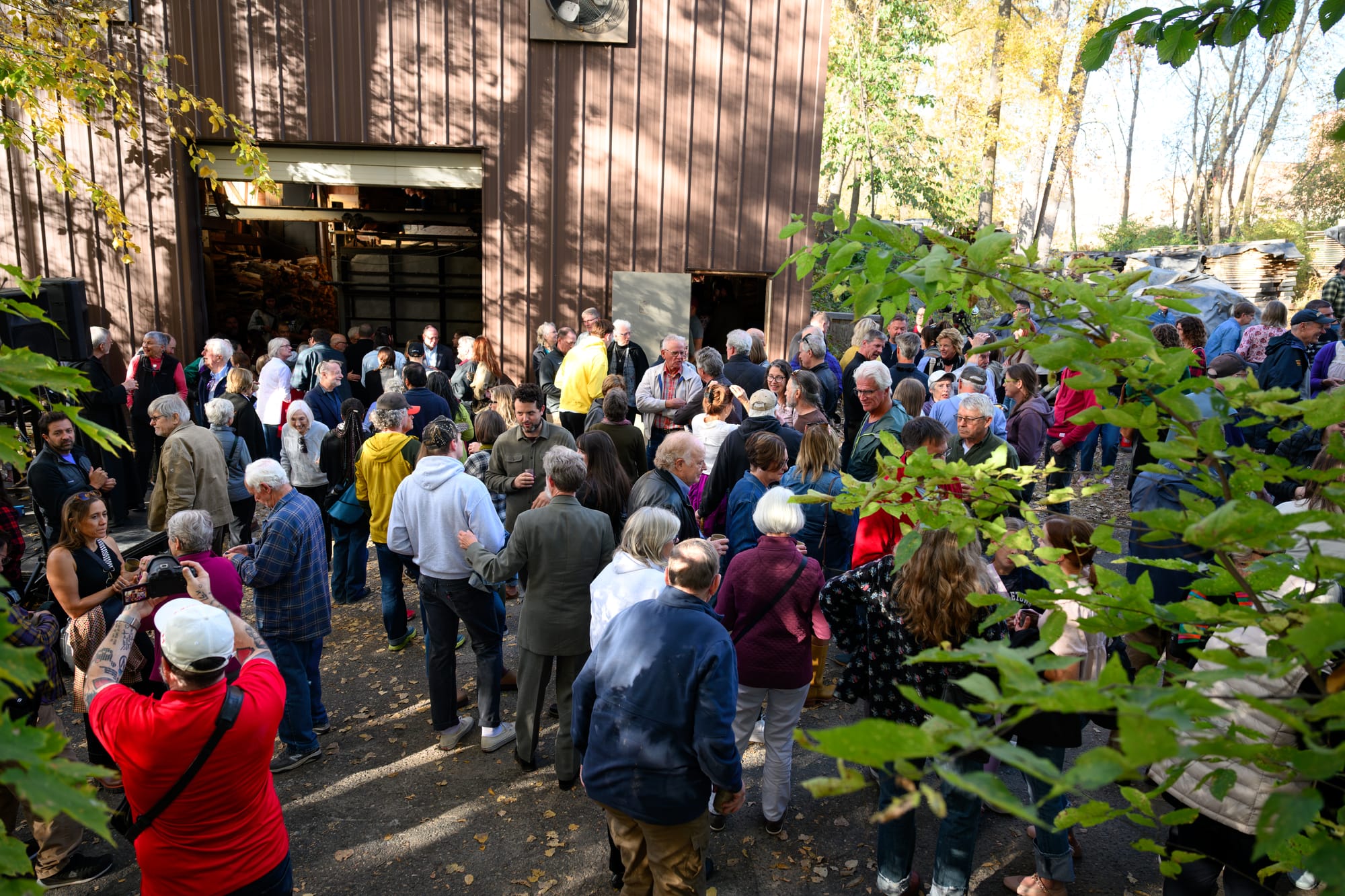
The kiln, which is overseen by about 60 volunteers over the 10-day firing, burns about 16 cords of wood. It was stacked to the ceiling by early October, collected, cut, and split over many months using sustainably harvested wood from trees that died or dropped limbs, or were removed or trimmed by power companies.
Once the firing is complete, the kiln is sealed and allowed to cool for two weeks before the doors are opened. Then staff carefully unload each freshly fired piece, studying the effects of fire and ash on clay vessels and sculptures from 30 artists based in 13 different states and several countries.
Bresnahan continues to support his students when they find their way back to the pottery studio’s hearth.
They share the values of caring for the earth and each other, they find joy in everyday rituals like afternoon tea, and they seek to make the world a better place, one cup at a time.
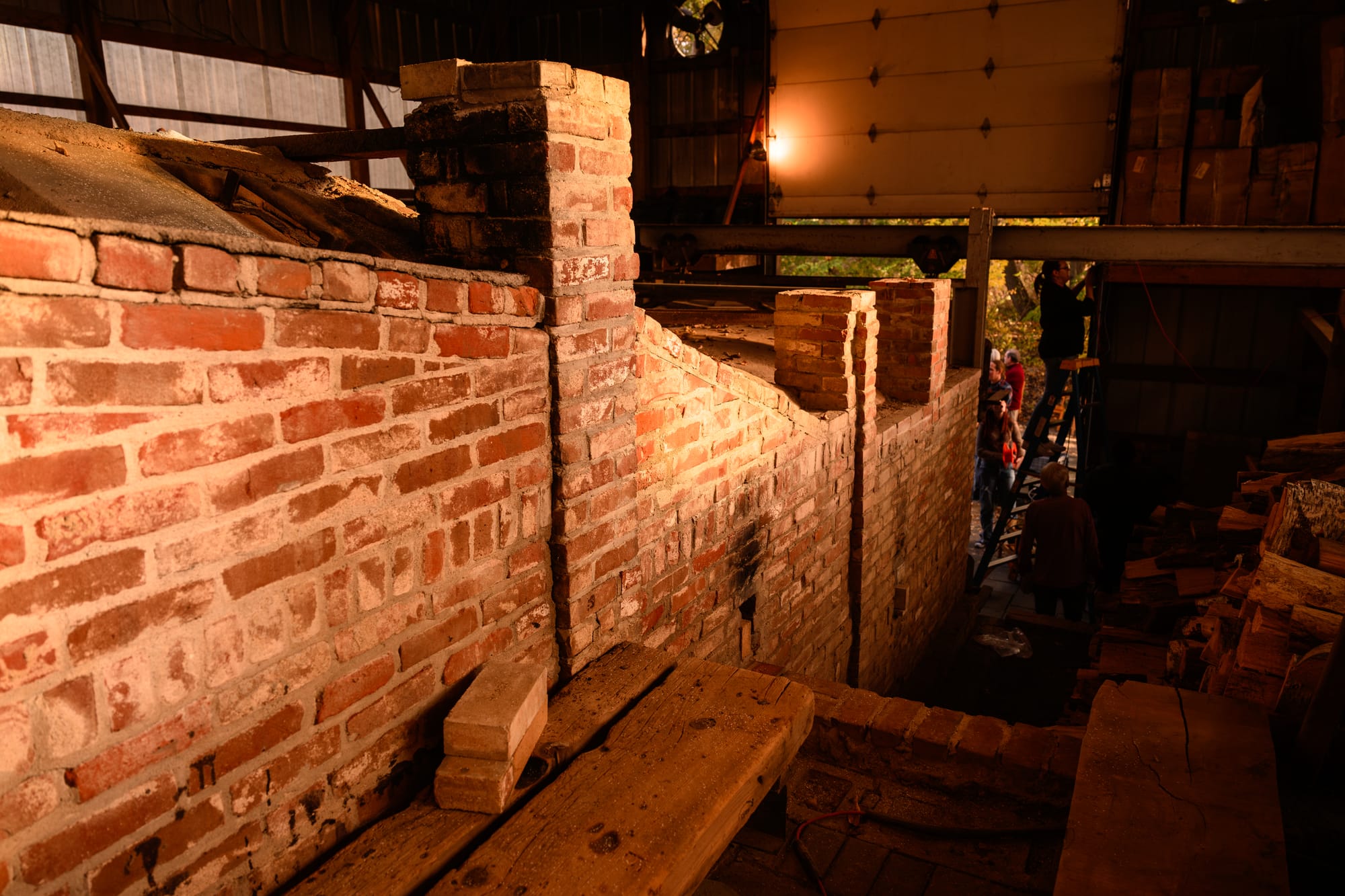
This story was edited by Jen Zettel-Vandenhouten.
It is part of Project Optimist's Biophilia series, which explores the intersection of art and nature. The series is supported by a grant from Arts Midwest. Learn more here.
